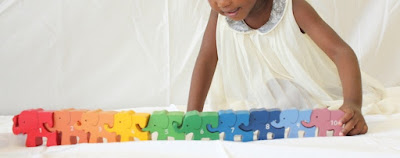Why does my child line up toys?

If you would have noticed, you would know that children love lining up their toys or placing objects in very specific ways. It may not necessarily make sense to an adult but it definitely makes complete sense to their little minds. They find it best to have things a certain way, that if ever a parent tries to reorganize or upset their ‘pattern’, it may result in tears or screams of frustration, followed by a tantrum, even. Sometimes children position, order and arrange objects in very obsessive and rigid manners. For example, lining up things in order of size, colour or shape or even texture. Some children also like their food to be placed in a certain way on their plate and they can be very upset and react strongly & negatively if certain types of food are touching. Lining up things can be looked at, from a child's perspective, as organizing or sorting. When they put similar items close to each other in a row, or stack them one above the other, they are actually ...


